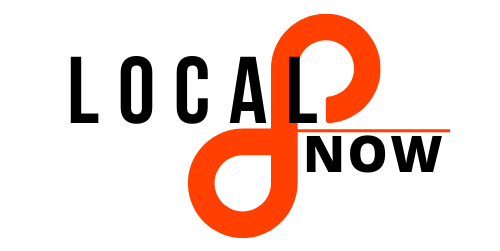The evolving landscape of remote work is marked by rapid transformations. It is prompting employers to rely more on cutting-edge tools for managing their distributed teams. Among the emerging solutions, screen capturing has garnered significant attention. The innovative technology empowers employers to monitor the computer activities of remote employees. This article explores screen capturing, how it works, and its role in remote work.
What is screen capturing?

Screen capturing involves capturing screenshots of an employee’s computer screen. The technology allows employers to gaian real-time insights. They can check how their remote employees are using their workstations. It’s essential to note that screen capturing is a part of employee monitoring software – controlio on your PC. These are tools that help improve productivity and ensure compliance in remote work environments.
How does screen capturing work?
Screen capturing operates by periodically capturing snapshots or recording videos of the employee’s desktop or specific applications. Organizations can achieve it by installing employee monitoring software on the individual’s computer.
The software runs in the back ground to capture the screen at predetermined intervals. You can also set triggers for specific events. The captured data then goes to a central server or cloud-based platform. Here, authorized personnel can review it for further action. The frequency of screen captures are customizable. They allow employers to balance monitoring productivity and respecting employee privacy.
Use cases of screen capturing in remote work

Here are the various use cases of screen capturing in remote work.
1. Performance monitoring
Screen capturing helps gauge an employee’s efficiency and effectiveness in completing tasks. Analyzing the recorded screens helps employers identify areas where employees may struggle and provide targeted support for better productivity.
2. Compliance and security
Screen capturing offers numerous benefits to employers. Employees can adhere to established protocols in industries like finance and healthcare. These industries witness regulatory compliance as a crucial aspect of operations. Furthermore, it helps detect potential security breaches to help organizations take prompt action to mitigate risks.
3. Training and development

Screen capturing can be valuable for training and development purposes. Employers can use recorded screens to create tutorials and share best practices. They can also facilitate knowledge transfer within the team, especially for remote onboarding processes.
4. Time and task management
Understanding ways in which employees allocate their time during work hours is crucial for effective task management. Screen capturing provides a detailed overview of time spent on applications and tasks. It helps employers optimize work schedules and improve time management practices.
Pitfalls to avoid with screen capturing

While screen capturing can be a powerful tool for enhancing productivity and security, organizations must navigate its implementation carefully. Here are some key considerations to ensure the responsible use of screen-capturing technology.
-
Lack of clarity and communication
A lack of communication regarding screen capturing can be common. Employees may feel uneasy if they understand that their employer is monitoring their screen. Organizations should thus establish policies to mitigate such inconveniences for their employees. Articulating the purposes and frequency of screen capturing helps build trust. It will also help create a positive remote work culture.
-
Over-monitoring and micromanagement

Excessive monitoring can lead to micromanagement. It can, therefore, negatively impact employee morale. Employers should carefully determine the appropriate level of monitoring. They can do this depending on the nature of the work and the organization’s goals. Constantly scrutinizing every action may lead to a decline in employee trust. It can also impact the collaborative and creative aspects of remote work.
-
Inadequate data security measures
Transmitting and storing captured screen data require advanced security measures to safeguard sensitive information. Organizations must ensure the platforms used for storing and processing screen captures adhere to industry-standard security protocols. Secure information transmission and access controls are essential to protect employee privacy and organizational data.
-
Ignoring privacy regulations

Many countries have stringent regulations regarding the use of employee data. Ignoring these privacy regulations can lead to legal consequences. It can damage an organization’s reputation. Employers must be well-versed in global privacy laws and ensure their screen-capturing practices align with these regulations.
-
Failure to provide opt-out options
Maintaining a positive work environment requires respecting employee autonomy. Organizations should consider allowing employees to opt out of screen capturing in specific scenarios. It is essential when their roles involve tasks that require a higher degree of privacy. Hence, this approach allows for a more flexible work environment.
-
Inconsistent implementation
Implementing screen-capturing policies inconsistently can lead to confusion and frustration among employees. Organizations must apply monitoring practices consistently across all levels and departments. A standardized approach helps prevent misunderstandings and ensures all employees are subject to the same monitoring standards.
-
Failing to focus on results and collaboration

Screen capturing should be a tool to enhance productivity and collaboration, not merely a surveillance mechanism. Organizations should shift from monitoring every action to analyzing the results achieved. Encouraging cooperation and using screen-capturing data to improve processes can create a positive work environment that prioritizes outcomes over constant surveillance.
Balancing employee privacy and productivity
While screen capturing offers numerous benefits regarding performance monitoring and security, it raises concerns about employee privacy. Striking the right balance ensures employees feel respected in their remote work environments.
Employee monitoring software needs transparent implementation with clear communication about the purpose and scope of screen capturing. Organizations must establish policies that outline the specific scenarios in which they will use screen capturing. They should emphasize its role in improving productivity and maintaining compliance.
Bottom line
There are few doubts about remote work becoming popular. The adoption of technologies like screen capturing is thus on the rise. Screen capturing has become a valuable tool for employers to manage their distributed workforce. When implemented thoughtfully, screen capturing can enhance productivity. It can also improve security in remote work environments. However, as with any technology, it is crucial to balance the benefits of monitoring and the respect for employee privacy. It will help create a positive remote work culture.












